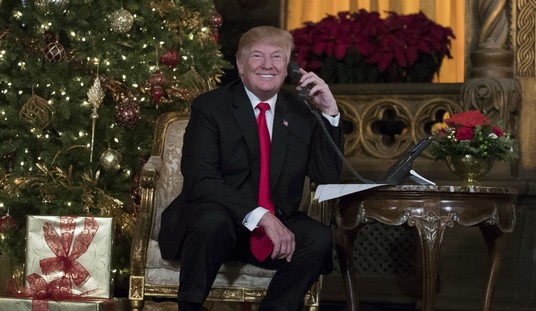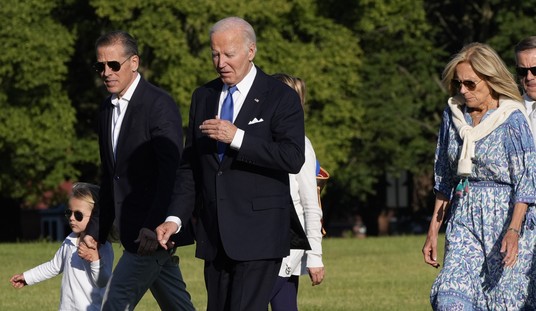President Obama’s budget is debt to me. The President’s budget does not implement promised cuts to spending, taxes nor the federal debt. The budget goes in a different direction increasing spending, increasing taxes and triples our national debt by end of this decade. I am not the only one who dislikes the President’s budgetary ideas. The President’s budget has been received on Capitol Hill like a Sputnik in a punch bowl.
It should be clear to all Americans, the President’s budget is debt to me, debt to my kids — debt, debt, debt.
The President’s SOTU pledge that “the final critical step in winning the future is to make sure we aren’t buried under a mountain of debt” is missed in this budget. According to Senate Budget Committee Ranking Member Jeff Sessions (R-AL), “the president’s budget doubles debt held by the public by the end of his term and triples by the end of the decade.”
According to Rep. Jim Jordan (R-OH), Chairman of the Republican Study Committee, this Obama budget is larger than the total debt accumulated by the federal government from 1789 to January 20, 2009.
In all, total proposed deficit spending amounts to more than $8.9 trillion over the period covered by the budget submission (FY 2011-2021). The lowest deficit in the budget proposal is $607 billion in 2015. In the last year of the budget (2021), the deficit would be $774 billion—which means there is no effort to balance the budget even after the current recession, and the wars in Afghanistan and Iraq, are long over. By contrast, the highest deficit prior to 2009 was $459 billion (FY 2008). If the deficit figures proposed by this budget are realized, all fourteen of the highest deficits in U.S. history will have occurred from FY 2008-2021.
How can the President claim to be cutting spending when he is actually increasing it? J.D. Foster, a colleague of mine at The Heritage Foundation, argues that the President has used an accounting gimmick to make it look like he is reducing annual deficits.
Having pushed discretionary spending up rapidly in the prior two years, the President proposes to reduce 2012 discretionary spending by 5 percent, though he does so only by virtue of three simple and obvious budget gimmicks:
- Redefining Pell grants as mandatory spending. Stripped of this gimmick, discretionary spending jumps by $14 billion in 2012.
- Reclassifying $54 billion of surface transportation spending from discretionary spending to mandatory spending.
- Spending the peace dividend. The budget proposal includes spending for military operations in Iraq and Afghanistan, referred to as “overseas contingency operations,” as discretionary spending and reduces funding for these operations by $38.2 billion in 2012.
On spending we are seeing more empty Obama promises. The President’s budget does nothing to stop a federal government that spends too much. The President’s State of the Union promised that “starting this year, we freeze annual domestic spending for the next five years” rings empty when you read the budget. His budget didn’t cut, freeze or slow spending. It increased spending to the tune of $8.7 trillion.
Jordan argues that this President can claim a 28% increase in spending under his tenure.
Federal spending has increased from $2.98 trillion in FY 2008 to a proposed $3.82 trillion in FY 2011. This is an increase of $836 billion or 28.0%.
Conn Carroll of The Foundry argues that massive federal outlays in education has lead to “nothing.”
Accordingly, the President’s budget includes a $13 billion increase in Department of Education spending from the 2010 budget. But this is hardly the first time a White House has significantly raised education spending. In fact, since 2001 federal education spending has already increased by 100 percent. And going back to 1970, it has almost tripled. And what have been the results of this federal “investment” in our future? Nothing.
A $13 billion increase in education spending does not sound like a “freeze” in “annual domestic spending” to me.
In the name of tax simplification, the President wants taxes increased to cover increases in government spending. In the State of the Union, the President promised “to simplify the individual tax code.” The President’s budget includes massive increases on taxes for job creators, gasoline and taxes on the enegy industry. Simply put, the President wants to raise taxes to the tune of $1.6 trillion.
According to Senator Session’s Budget Committee summary and analysis of the President’s budget, tax increases are plentiful. First is his plan on taxing job creators.
The budget reflects the President’s pledge to raise taxes on higher income individuals. It assumes that the top marginal income tax rate rises to 39.6 percent at the end of 2012. It also assumes that the estate tax rate increases to 45 percent and the exemption amount falls to $3.5 million. The exemption amount would not be indexed for inflation. Together, both provisions would increase revenues by $807 billion over the next ten years.
Next is his plan to increase the gas tax.
The budget includes a proposal, entitled ?Bipartisan financing for Transportation Trust Fund, that would raise revenues $435 billion over ten years. That amount is offset by $107 billion of reduced collections of income and payroll taxes. (Increased excise taxes tend to depress the
collection of other sources of receipts and by standard budgetary convention a 25 percent offset is assumed.) Net new collections total $328 billion. Of that amount, 73 percent would be dedicated to a combination of highway trust fund spending, aviation spending, and TIGER
grants. The remaining $87 billion would be used to reduce the deficit. While no details are available, the additional amount of revenue collected from the proposal is similar to both the Carper-Voinovich $0.25 gas tax increase and CBO’s 2009 deficit reduction option. In a letter to the Fiscal Commission, Senators Carper and Voinovich described their proposal as raising the gas tax by one cent per month for 25 months. Their proposal dedicated 10 cents to deficit reduction and 15 cents to fund transportation improvements. They proposed indexing the tax to inflation once it was fully phased in.
This plan is chock full of new spending, higher taxes and more debt for our nations’ children and grandchildren. This Budget should be seen as debt — debt to the American people and debt to Congress.














Join the conversation as a VIP Member